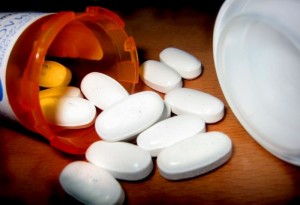Water Conservation
Drinking a glass of water could expose you to hundreds of different medicines with each sip; learn how to protect the water supply.
Drinking a glass of water could expose you to hundreds of different medicines with each sip; learn how to protect the water supply.
Painkillers, birth control, anti-depressants, vitamins and antibiotics, no we are not talking about what you find in the local pharmacy, the truth is scarier than that. Each of these medicines among other compounds like shampoo residue and drain cleaner are what you can find in the drinking water for millions of Americans. The presence of all of these drugs in our water supply is intensifying worries among scientists as they are not able to fully understand the long term consequences to this prolonged exposure.
 Pharmaceuticals have been linked to sexual and behavioral mutations in amphibians, birds and fish, according to studies conducted by the Environmental Protection Agency (EPA). Concerns were compounded when the United States Geological Survey (USGS) discovered intersex fish in the Potomac River and tributaries. These fish were male, small and large mouth bass, though they carried immature eggs. The scientists were unable to confirm if this was a new phenomenon caused by chemicals in the water or an existing condition, however it did renew fears of genetic mutations caused by a polluted water supply.
Pharmaceuticals have been linked to sexual and behavioral mutations in amphibians, birds and fish, according to studies conducted by the Environmental Protection Agency (EPA). Concerns were compounded when the United States Geological Survey (USGS) discovered intersex fish in the Potomac River and tributaries. These fish were male, small and large mouth bass, though they carried immature eggs. The scientists were unable to confirm if this was a new phenomenon caused by chemicals in the water or an existing condition, however it did renew fears of genetic mutations caused by a polluted water supply.
Prescription drugs find their way into the public water supply by two primary methods. The first method is through the excretions of human waste, this can’t be easily controlled. The other is the improper disposal of the drugs or chemicals by flushing them down the toilet. It is this method that is 100 percent avoidable but often overlooked. We have compiled some helpful tips on how to properly dispose of medicines to help you go green and avoid contaminating the water supply.
Regardless of whether you live in the city or outskirts of town, your potential exposure risk remains the same. It is up to each person to help conserve water and reduce the amount of chemical pollutants that enter our drinking water. Do your part and dispose of your unused prescription drugs safely and keep them out of our water.